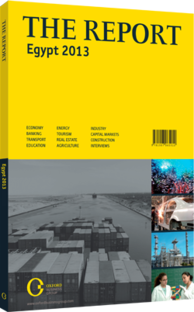OBG talks to Simon Brown, Managing Director, Maersk Line Egypt

Interview: Simon Brown
What bottlenecks or challenges do you see within the container sector?
SIMON BROWN: If you take a step back from the container industry, we have issues with the acute shortage of foreign currency and the uncertainty over the exchange rate of the Egyptian pound. Both of these factors make it difficult for our customers to open letters of credit and to commit to long-term arrangements.
When you talk to the main players involved in trade and transportation in Egypt, I would say they are all concerned with the significant slowdown in the economy over the last two years. Just as worrying is the lack of political compromise that appears to be hampering any credible efforts to reverse this trend. It is important that private enterprise is encouraged to fully contribute to developing the maritime sector in Egypt.
In the short term it is the inability of the container terminals to deliver consistent and reliable service. There are various reasons for this depending on the specific terminal. Having low-cost, reliable container terminals which deliver world-class productivity is a critical enabler for any economy to effectively compete in the global market place.
Connected to this, the other main challenge our customers experience is that the costs of Customs clearance varies too much across Egyptian ports. With a harmonised Customs regime across all ports and terminals Egypt could develop greater economies of scale through more efficient container terminals. This in turn would translate to Egyptian importers and exporters being more competitive in the global marketplace.
How would you assess the global and Egyptian trends in the container business?
BROWN: Globally, the container shipping industry is going through a period of rapid change. In the next few years we will have too many vessels in the hands of too many carriers chasing too little cargo. Again, there are good reasons for this, but nevertheless this is the current reality. So overall 2013 presents container lines with a bigger challenge, but the industry is becoming smarter about matching capacity with demand.
In Egypt, the key short-term trends are being influenced by the significant headwinds in the economy – the lack of “dollars, diesel and demand”, to put it simply. Most of our customers are finding it difficult to operate their businesses as well as to contend with compromised supply chains. On top of this we have to say that the overall security situation in the country is still some way short of pre-revolution times and of what people and businesses required to start investing.
Does the current marine transportation infrastructure support economic activity?
BROWN: With the downward spiral of the economy the shortcomings of the commercial transportation system are being exposed. Short term we have to keep the cargo moving and ensure that the factories producing goods and employing people do not stop. When they do, they lose orders and their international reputation is damaged, which can take years to rebuild at substantial cost.
Looking ahead, it is about building scale to drive down transportation costs for Egyptian businesses. There is only one world-class terminal in Egypt and that is the Suez Canal Container Terminal in Port Said. We are working with them and the authorities to be able to bring larger vessels into Egypt. We successfully conducted trials in 2012 to get the PS-type vessels – 11,000 twenty-foot equivalent units (TEU) vessels – and we are preparing for the Triple E class (18,000 TEU) during 2013. These ships will not only be the largest in the world but they will also be the most efficient and environmentally friendly.
After the issue of Customs, which I mentioned earlier, the next challenge is the lack of rail for containerised transportation. The game changer for Egypt will be a rail network linking Port Said to an inland container depot in Cairo. This will take a significant private and public partnership to bring to life.
You have reached the limit of premium articles you can view for free.
Choose from the options below to purchase print or digital editions of our Reports. You can also purchase a website subscription giving you unlimited access to all of our Reports online for 12 months.
If you have already purchased this Report or have a website subscription, please login to continue.

